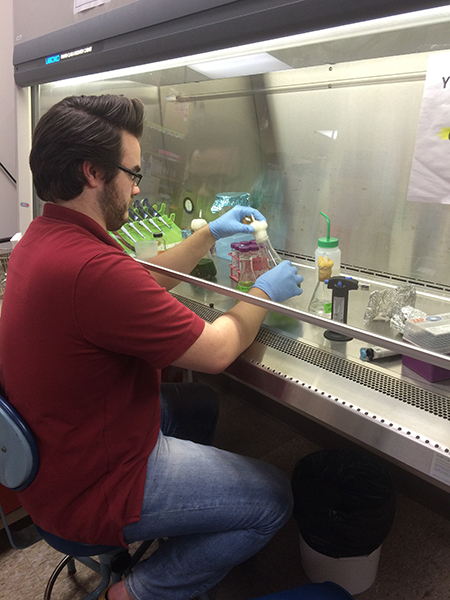Matthew Breuer
Our summer research was executed with the intent of further characterizing and understanding the process of programmed cell death (PCD) in the single-celled algae Chlamydomonas reinhardtii. To date, Chlamydomonas has been used for some studies of PCD, but the process has not been characterized to a high degree. A greater insight into this process is important for evolutionary studies and also may have applications in the waste management and biofuel production industries. Though my research partner Ally and I had made some progress on the project in prior semesters, we were able to make significant headway with the project during the summer months. Our research focused on two main goals. The first goal was to better understand the molecular underpinnings of the PCD process in Chlamydomonas. The second goal was to gain a better understanding as to why a unicellular organism might possess a genetic program which triggers its own death.

In order to understand why a unicellular organism might undergo programmed cell death, we took media from cells which had undergone PCD and used it to grow new cells. We also measured the relative amount of death that occurred in cultures containing one species of Chlamydomonas and cultures containing two species of Chlamydomonas in order to determine if this organism preferentially dies in response to stress when surrounded by kin. Both of these experiments are currently ongoing.
As someone considering research as a career choice, this summer research was an excellent way to experience what a full-time research position might look like. Our work this summer also gave us ideas for other projects and experiments based on the results that we observed. I am especially thankful to Dr. Gaillard for the opportunity to be involved in such an in-depth project, particularly as an undergraduate. I believe that this type of hand-on research is the most effective way of improving the scientific skills of developing researchers. I would also like to thank the EURECA program for presenting us with the FAST grant. Because of this award, we were able to make significant progress towards our goals and hope to have the majority of this research finished by the end of the year.
